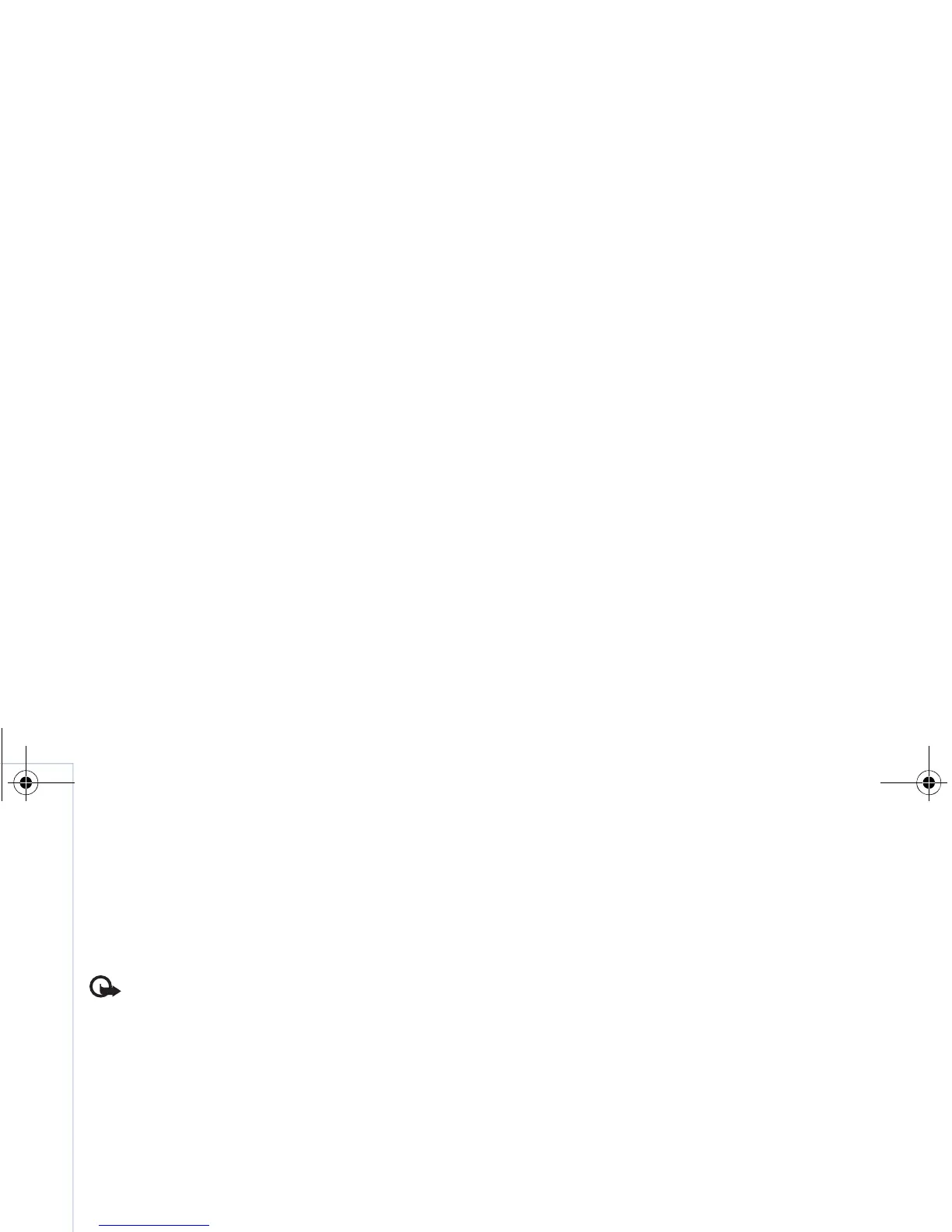Additional safety information
126
Copyright © 2007 Nokia. All rights reserved.
the air contains chemicals or particles such as grain, dust or
metal powders.
Emergency calls
Important: Wireless phones, including this device,
operate using radio signals, wireless networks,
landline networks, and user-programmed
functions. Because of this, connections in all
conditions cannot be guaranteed. You should
never rely solely on any wireless device for
essential communications like medical
emergencies.
To make an emergency call:
1 If the device is not on, switch it on. Check for adequate
signal strength.
Some networks may require that a valid SIM card is
properly inserted in the device.
2 Press the end key as many times as needed to clear the
display and ready the device for calls.
3 Enter the official emergency number for your present
location. Emergency numbers vary by location.
4 Press the call key.
If certain features are in use, you may first need to turn those
features off before you can make an emergency call. If the
device is in the offline or flight profile mode, you may need to
change the profile to activate the phone function before you
can make an emergency call. Consult this guide or your service
provider for more information.
When making an emergency call, give all the necessary
information as accurately as possible. Your wireless device
may be the only means of communication at the scene of an
accident. Do not end the call until given permission to do so.
Certification information (SAR)
THIS MOBILE DEVICE MEETS GUIDELINES FOR EXPOSURE TO
RADIO WAVES.
Your mobile device is a radio transmitter and receiver. It is
designed not to exceed the limits for exposure to radio waves
recommended by international guidelines. These guidelines
were developed by the independent scientific organization
ICNIRP and include safety margins designed to assure the
protection of all persons, regardless of age and health.
The exposure guidelines for mobile devices employ a unit of
measurement known as the Specific Absorption Rate or SAR.
The SAR limit stated in the ICNIRP guidelines is 2.0 watts/
kilogram (W/kg) averaged over 10 grams of tissue. Tests for
SAR are conducted using standard operating positions with
the device transmitting at its highest certified power level in
all tested frequency bands. The actual SAR level of an
operating device can be below the maximum value because
the device is designed to use only the power required to reach
the network. That amount changes depending on a number of
factors such as how close you are to a network base station.
9253189_N80_en_apac.book Page 126 Tuesday, September 25, 2007 10:09 AM

